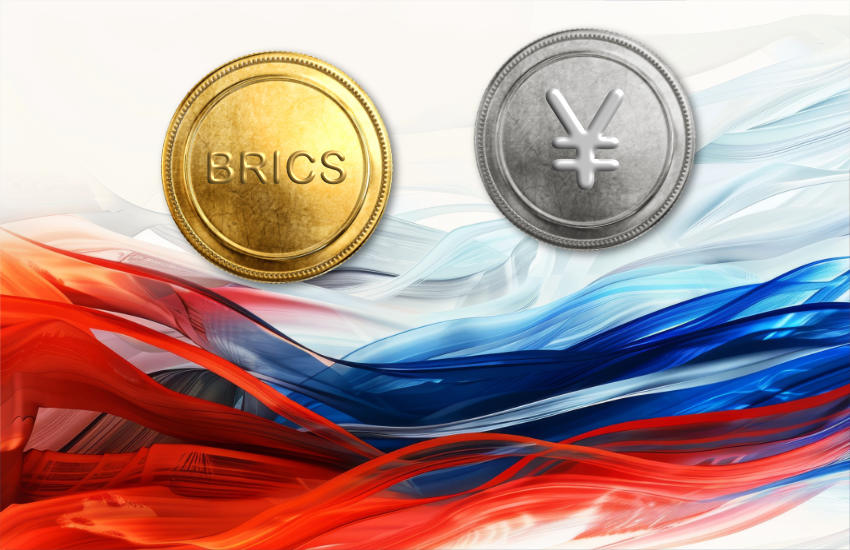Last week, Russian media outlet Kommersant reported on plans to create two cryptocurrency exchanges for foreign payments to circumvent sanctions, citing sources. The goal is to create stablecoins for the Chinese yuan and a basket of BRICS currencies. It is expected that initially individuals will not be able to participate in them, as the goal is to support importers and exporters.
Russia passed a law in late July allowing cryptocurrency exchanges to operate under the experimental cryptocurrency legal regime (ELR) as part of a program developed by the central bank.
Using stablecoins rather than unbacked cryptocurrencies makes sense given the role of the central bank.
Update: Shortly after publication, Bloomberg reported that preliminary tests would begin this weekend, citing sources. These trials will use the national payment card system to exchange rubles for any cryptocurrency using an existing cryptocurrency exchange. Using the card system gives the central bank control. The outcome of these preliminary tests will determine the steps around the potential creation of cryptocurrency exchanges next year, as described below. Bloomberg’s sources reiterated the same two exchanges.
The Kommersant article sparked some controversy. It claimed that one of the cryptocurrency exchanges could involve the Moscow Exchange. The other exchange will use the St. Petersburg Stock Exchange (SPCE) database for foreign economic activity.
Although the St. Petersburg Stock Exchange has disputed this, it would be wise to use its database, given that the St. Petersburg Stock Exchange knows the contact details of importers and exporters. The state news agency Interfax published a report in which the St. Petersburg Stock Exchange (SPCE) categorically denied any involvement.
The Moscow Exchange operates the main foreign exchange market, but trading in dollars and euros was abruptly halted in June when OFAC placed it on the sanctions list. Therefore, it also has data on who might qualify as a professional stablecoin trader.
There may be some confusion between two entities that we suspect are not related. Sanctions and their evasion sometimes resemble a game of whack-a-mole. Every time Europe or OFAC sanctions an entity or methodology, Russia tries something else.
Russia has iterated through foreign branches, digital financial assets involving tokenized commodities, CBDCs, cryptocurrencies and others. Foreign branches are being progressively sanctioned, with warnings not to open new ones. And most known digital financial asset (DFA) issuance platforms and cryptocurrency exchanges have also been sanctioned. The sanctions announced this week concern commodities.
Sanctions and two Russian entities with similar names
There are two Russian entities with similar names. There is the St. Petersburg Stock Exchange, known in English as SPCEX or SPVB and in Russia as JSC SPB, as opposed to the St. Petersburg Stock Exchange (PJSC SPB). OFAC sanctioned the exchange in November 2023. We do not believe the exchange has ever been sanctioned directly, but there is a caveat.
It seems that the state-owned Promsvyazbank controls the exchange. The bank was one of the first to be included in the sanctions list, which includes subsidiaries and thus the exchange. However, since the ownership is not entirely clear, it is conceivable that the exchange has been ignored so far. Perhaps that is why it does not want to be associated with the crypto exchange.
Google translates the exchange acronym СПВБ as St. Petersburg Stock Exchange.
On the other hand, the sanctioned exchange is registered as a digital financial asset platform. In an interview in May, its CEO said that its involvement as a cryptocurrency exchange operator was under discussion. However, we believe that it is the currency exchange that has the useful data.
If Russia is not yet clear, neither is the other side. If Russia wants to use a Chinese stablecoin, what assets will be part of the reserves? It is likely that it will use the excess reserves received by Russia for all payments.
Which cryptocurrency exchange platform will be used on the Chinese side? Will China allow a stablecoin transition to the mainland? Or will it be done via Hong Kong?
An even more important question is: in the absence of CBDC, could stablecoins form the interim basis of the so-called BRICS bridge for local currency payments?

